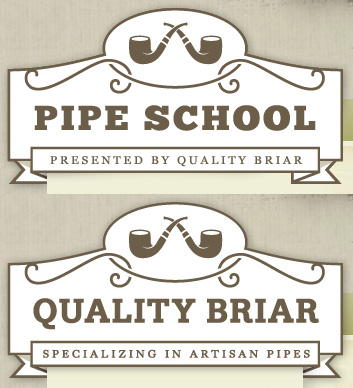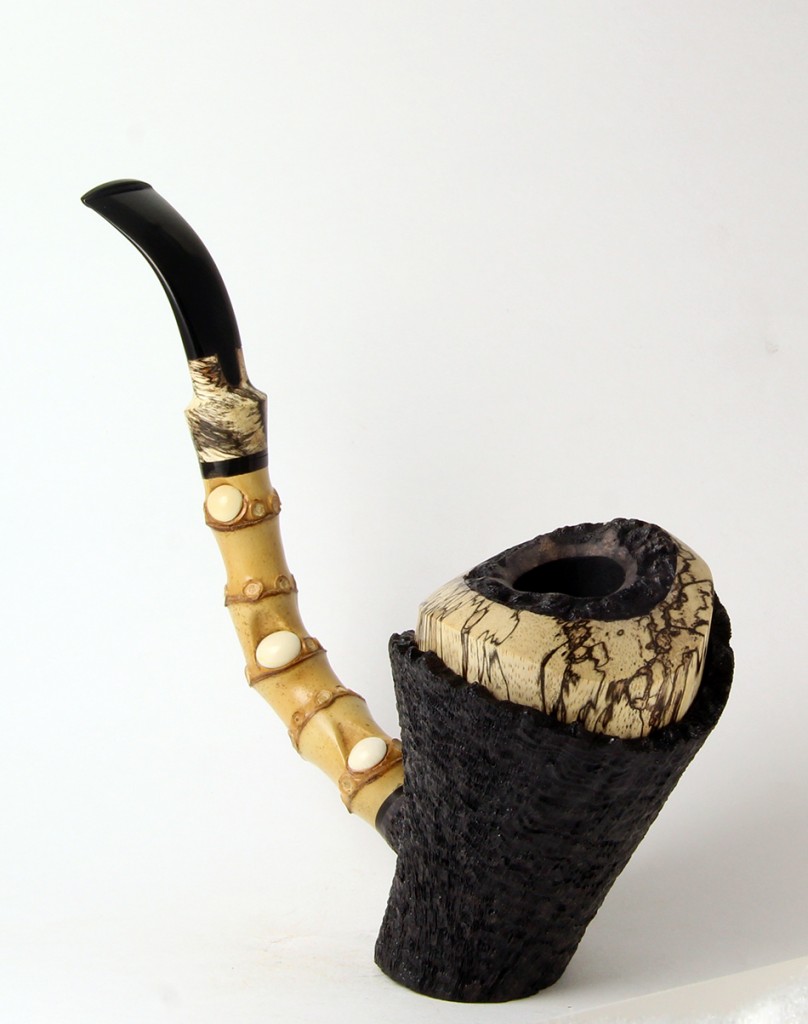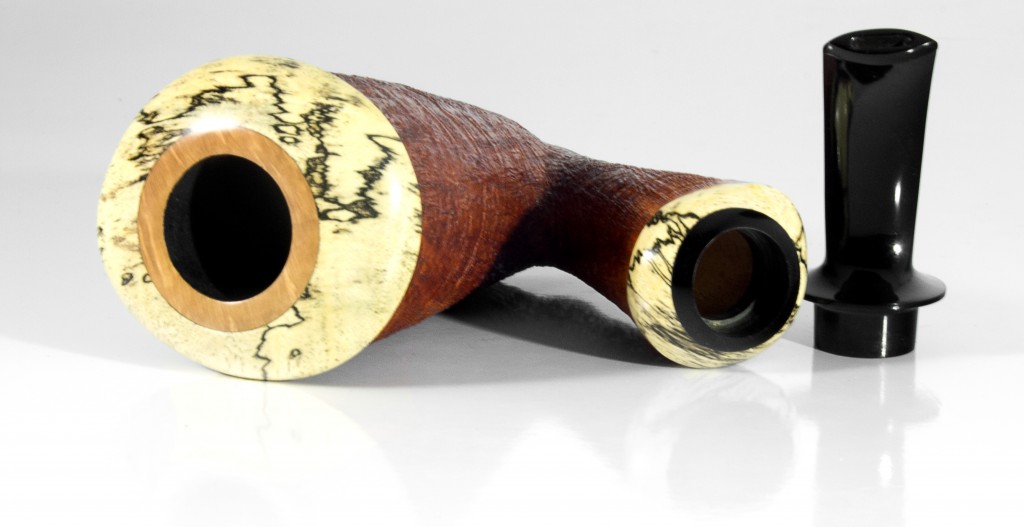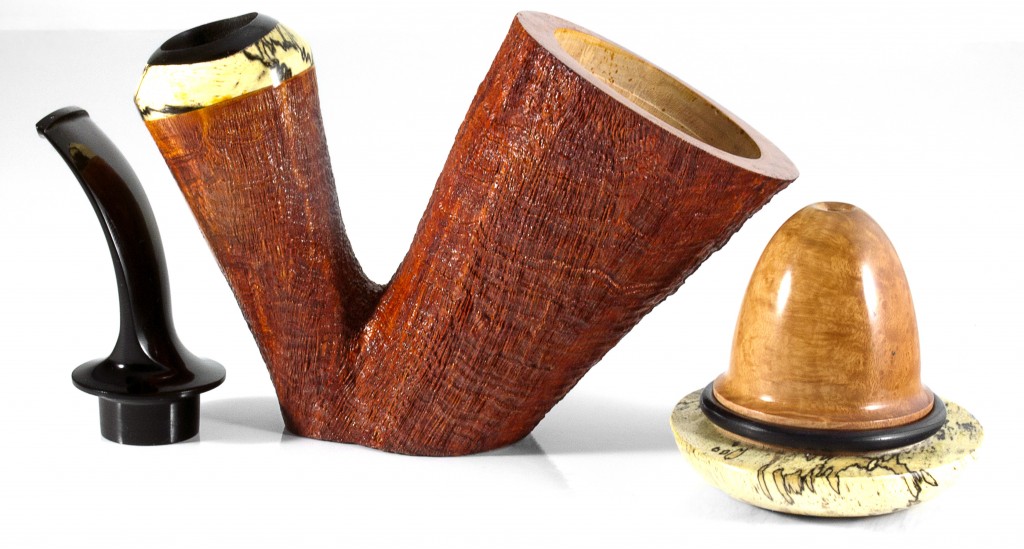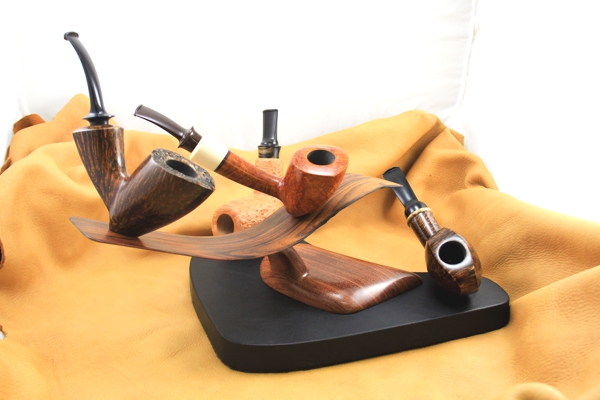
The pipes looked like they were floating there.
I was walking down the lanes of the Chicago Pipe Show main room in May, 2012, with Lauren by my side. Near the table of Cornell & Diehl, there was a table with a number of drool-inducing pipe stands, with pipes held on by magnets. I won’t lie, I don’t remember much about the pipes on that table, nor do I remember much about the person behind the table.
Months later, I found the card for the artisan who created those stands and started hearing his name more and more: Grant Batson. Grant’s name wasn’t being mentioned because of his pipe stands, however, but because of his pipes. Since November, I have become enthralled with Grant’s work, gobbling up almost anything that he has to offer. I have also realized that he is an incredibly talented and kindhearted man. Even when he’s had a rough day in the workshop, I can always hear Grant smiling over the phone.

It was while in college that Grant was first introduced to pipes. “In 1995, I was in college, and thought pipe smoking would be a cool hobby. I’m terrible with times and dates, but I do remember that one of the very first pipes I bought was during a missionary trip to Uganda. It was a solid hand-carved pipe made exclusively from Gaboon Ebony. I also began collecting (bordering on hoarding) pipes from ebay. I had fun finding little gems in assortments of estate sales.”
After graduating with degrees in PR/Marketing and Spanish, Grant took his years of woodworking experience, combined it with his passion for music, and started the Batson Guitar Company with his brother, Cory. Grant and Cory not only created a successful company, but a highly innovative acoustic guitar that is extremely popular with many guitar enthusiasts.
Recently, Grant Batson changed his focus. He has turned the guitar company over to his brother and has started to hone his skills in pipe making. I was shocked to discover, after owning and being very pleased with three of his pipes, that he has only been making pipes since April, 2012. In less than a year, this man has learned the craft and has found incredible success, with his pipes being sold on some of the most esteemed high-end pipe websites around.
Though both guitars and and pipes involve woodworking, it might not seem like the most natural transition for a craftsman. When I asked Grant how guitars and pipes related, he mused that they are “very similar industries. Pipes and guitars are both ‘functional art’with huge collectibility. The tooling for the manufacturing of these is vastly different, but both take both sides of your brain to pull off, if you know what I mean. For me, pipe making is much more enjoyable, as the science is relatively simple. The art portion leaves much more room for creativity.”
This room for creativity has led Grant to discover a signature shape within his first 100 pipes, even if he didn’t mean to. The blowfish is a shape that seems to be only increasing in popularity and allows for a great deal of artistic license. Grant Batson’s unique creation, however, is quite different from any other rendition that I have seen and I would imagine H.P. Lovecraft would have loved it.
He calls it a “Tormented Blowfish”. No, this is not a pipe that has many personal demons. Rather, the blowfish has more sharp edges than the typical, rounded shape, and features roughed, gnarly outlines. I find this rendition of the blowfish to be attractive and captivating, mostly because, much like the accentuated outlines in comic book art, the rusticated edges emphasize the flow of the lines that otherwise would be more difficult to appreciate.
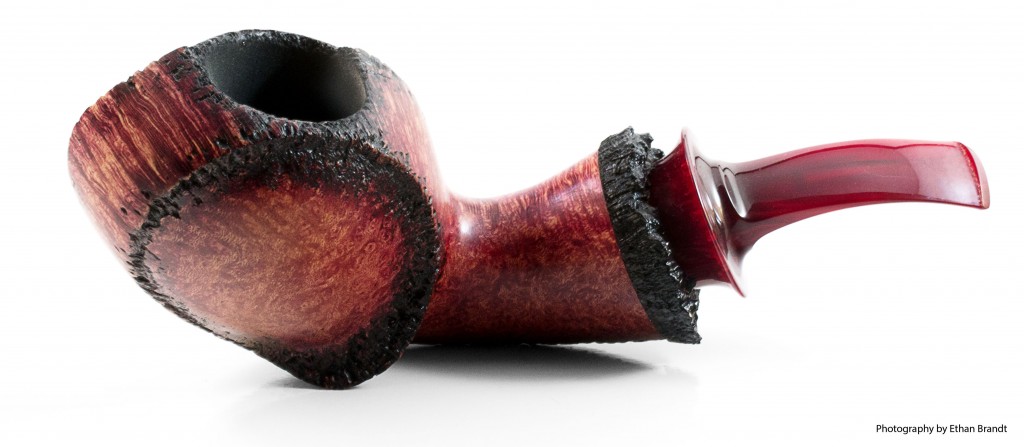
When Grant was designing my individual TBF, he seemed ecstatic, yet anxious at the same time: ”The grain on this one makes me not want to rusticate it.” That had me a little nervous that the grain would be totally obscured, but my fears were unfounded; in actuality, I found that the rustication emphasized the splendid grain. Grant’s other last minute addition was the red stem: brilliant! I was also surprised by the incredible amount of tobacco that the bowl could hold. While smaller than my Ardor giant, the chamber is still enough to occupy me for a fortnight!
Now, the pipe might appear slightly cumbersome at first. Initially, I struggled to find the most comfortable grip, as a result of the little fin that sticks out on the side. Once I found the right hand position, however, it became a very comfortable pipe.
As a result, Grant has recently found himself overwhelmed with commissions for his Tormented Blowfish, or TBF. Grant seemed quite surprised by the shape’s recent popularity: “a good client of mine in Wisconsin, requested a blowfish that looked a little dark and evil. So, I rusticated the edges or lines of it, stained it gray and black, added deer antler (Jim, the client, is a big hunter) as the shank ring and put a funky stem on it. The Tormented Blowfish was born. Since then, I’ve had more orders for the TBF than any other shape. Crazy.”
As a testament to the high quality of Grant’s work as a whole, and his Tormented Blowfish specifically, Dustin Babitzke is one of the TBF’s biggest fans. As perhaps the world’s foremost blowfish collector, and one of my closest friends, I hold Dustin’s opinions on pipes and the blowfish shape in extremely high regard. Here are his comments on Grant’s work and his own Tormented Blowfish:
When I hear the word Tormented the last thing I tend to think about is Pipe Smoking. In general, our hobby is a fairly stress free one where we go to tear ourselves away from the torment and stress of day-to-day life. So when I heard that a pipe maker I’ve had my eye on since last May had made a “Tormented Blowfish”, I had to find out what was happening.
Grant Batson came on my radar last year at the Chicago show. Todd Johnson had been telling me for months that Grant was going to be the next big carver. I was intrigued and upon meeting Grant, instantly realized that this was a guy I could get along with. He’s a heck of a guy and an amazing Luthier. He showed me a guitar he had made and I was blown away. Then he pulled out a pipe stand that instantly captured my heart (and my pocketbook). The man obviously had skill as a wood worker, but as we all know, knowing how to work with wood does not a pipe maker make. With my limited budget at the pipe show I opted to just buy the pipe stand and not purchase any of Grant’s pipes (a mistake in hindsight, but read on).
So as the months went by I kept receiving updates from Grant on new pipes he had been working on and the pipe makers he was getting training from. I watched his carving skills emerge and his eye for grain was impeccable. And then, on a fateful day in Autumn, I saw the Tormented Blowfish, a combination of sandblasted and smooth briar with a gnarly finish around the shank. I had never seen someone capture the beauty and grain of a pipe with such a fearsome and rugged look.
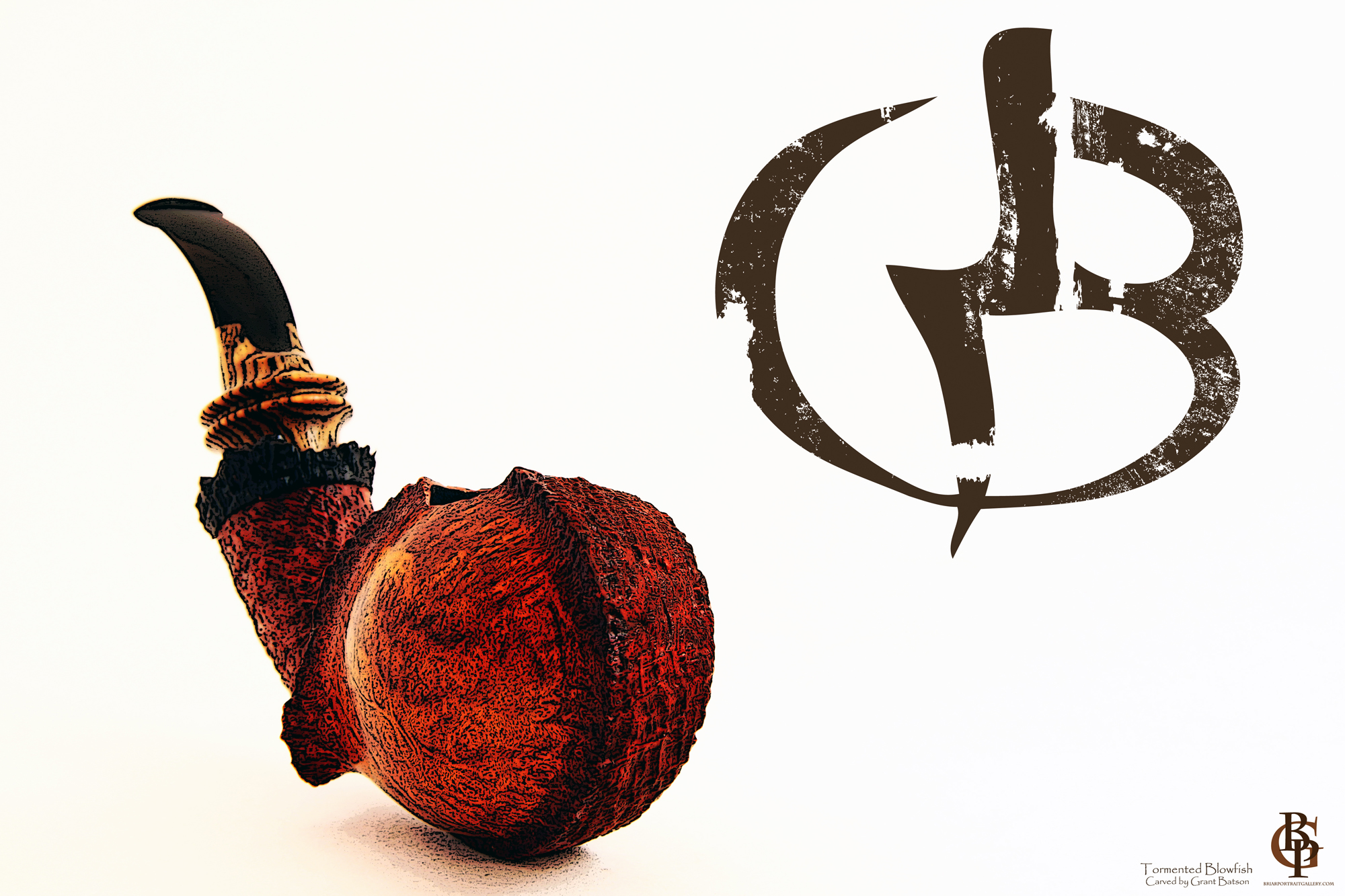 (Photo by Dustin Babitzke)
(Photo by Dustin Babitzke)
Being a Blowfish fanatic, I find that many makers seem to think that any old crossgrain apple can be called a Blowfish, but Grant realized that the Blowfish needs an organic look and feel that captures the spirit of Lars Ivarsson’s original concept. It should look alive and almost ready to swim out of your hand. Grant captured that perspective perfectly. I was awe struck and on the phone the next morning to Grant. Within two weeks a package arrived at my door with the Tormented Fish ready to be lit.
Before I speak of its smoking characteristics I have to mention the pipes outward beauty. Weighing in at less than 60 grams, the first thing I was surprised by was the feel in the mouth. The button was comfortable to clench, the balance was perfect, and the awkward weight I usually feel from the bowl of a Blowfish was not apparent. Both side panels of the pipe feature gorgeous birdseye so he left both smooth to showoff the grain. He then blasted the rest of the pipe with a deep blast that brought out the crossgrain on the bowl and then amazing tight birdseye rings along the shank. He finishes the shank off with a deep black stained piece of briar Plateaux that has been made to look almost burned or charred. The overall appearance is a pipe that has been through the flames of Hell and back and survived the journey. But upon lighting a new story erupted.
I packed it with one of my favorite tobaccos, Blue Mountain, and struck the charring light. The draw was perfect, not too much but little to no resistance. The engineering could not have been better if Cornelius Manz himself finished the pipe. Through an entire 1 hours and 7 minute (yes I timed it) bowlful I was transported not through Hell, but through a Nirvanic bliss that words cannot do justice. No relights, no gurgling, no nasty pipe water in the mouth, nothing to ruin the enjoyment of this sweet pipe ever emerged. At the writing of this article I’ve probably enjoyed another 50 or so smokes with a similar experience. How could a pipe maker with less than a year of pipe making under his belt do something this wonderful? He’s damn good, that’s how.
I love to buy pipes from new makers and love to chat with them on things I would do to make the pipe better. I love watching new makers emerge and improve their skills. But with Grant Batson I have no critique, I have no tips, I have no requests except put me on your commissions list right away, I’m ready for the next one. For anyone considering what Artisan Pipemakers they should be putting their “must-buy-from” list this year, Grant needs to be #1.
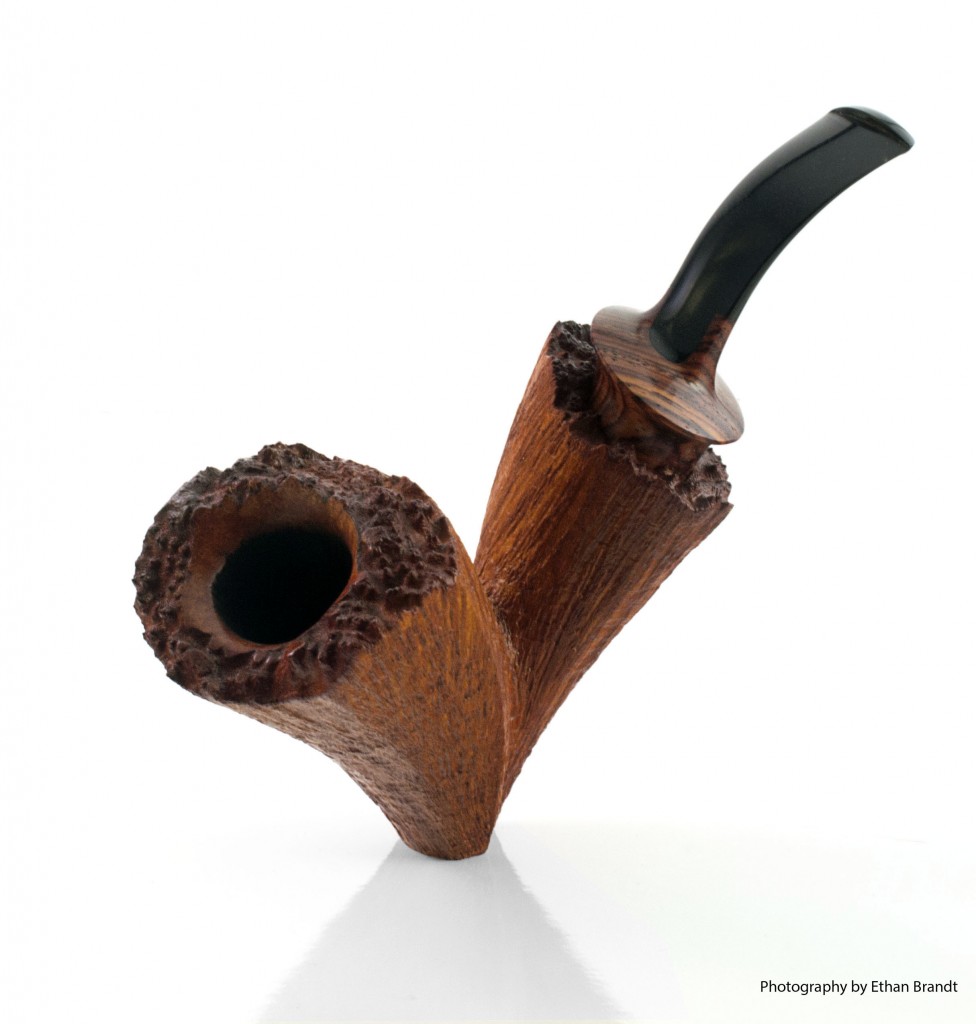 Here’s another reason that I — Ethan again! — would add Grant to your list: plateau. Those of you that have read a few of my pieces might know that I absolutely love plateau on a pipe. When I first started inspecting Grant’s work, I noticed that many of his pipes featured a decent section of prominent plateau.
Here’s another reason that I — Ethan again! — would add Grant to your list: plateau. Those of you that have read a few of my pieces might know that I absolutely love plateau on a pipe. When I first started inspecting Grant’s work, I noticed that many of his pipes featured a decent section of prominent plateau.
“I love plateau,” Grant said happily. “I’m a country boy and love things rustic, raw, and real. Whenever I’m able to leave plateau on a pipe, I do. Not only does it look great, in my opinion, but it serves as a reminder to me of where this shiny, expensive luxury item came from: dug out of the earth by hand and thrown into a wooden wheel-barrow.”
Grant’s appreciation of the rustic is clear in his work, but so is his experience with making musical instruments. The result must be functional just as much as it must be beautiful. “If it don’t smoke great, it ain’t a great pipe. Grain Schmain. And I love grain. Shapes are fun, too, but smokability is the only real factor of importance, I think. The stem should be comfortable and the draw should be open.” I can testify from personal experience, Grant’s opinion on the importance of engineering is clear in the smoking quality of his work.
This particular pipe that you see to the right is one that Grant made even before he made my Tormented Blowfish. It is a gorgeous sitter with a good deal of Japanese aesthetics. Slight asymmetrical, it leans to one side, as if it is attempting to burst out of its perpetual seated position.
I’ll admit, I kind of feel bad sharing this with you. Grant is a remarkable artist and I have no doubt that he will quickly become a universal name in the pipe world. Until then, however, I feel like being selfish and hiding this genius. But I can’t (dammit). If you have not checked out Grant’s work yet, I highly recommend you do and keep an eye on this guy.
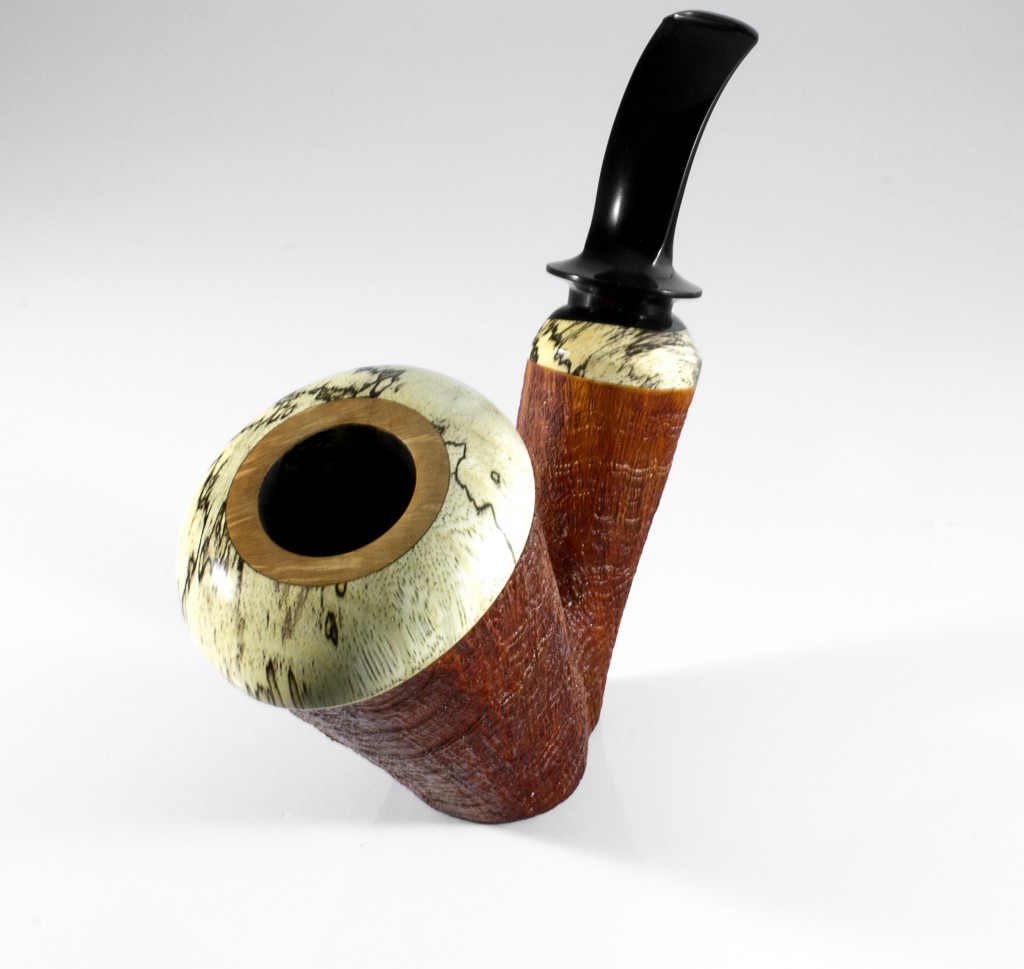 Do you have a friend that is almost like a brother or sister to you? And isn’t it true that siblings often compete with one another? I guess it’s no surprise that Dustin and I, who call each other “brother”, are a tad competitive with our pipes. Both of us are collectors and we have very similar tastes: American artisans, Russian pipes, reverse and regular calabashes.
Do you have a friend that is almost like a brother or sister to you? And isn’t it true that siblings often compete with one another? I guess it’s no surprise that Dustin and I, who call each other “brother”, are a tad competitive with our pipes. Both of us are collectors and we have very similar tastes: American artisans, Russian pipes, reverse and regular calabashes.![]() ”
”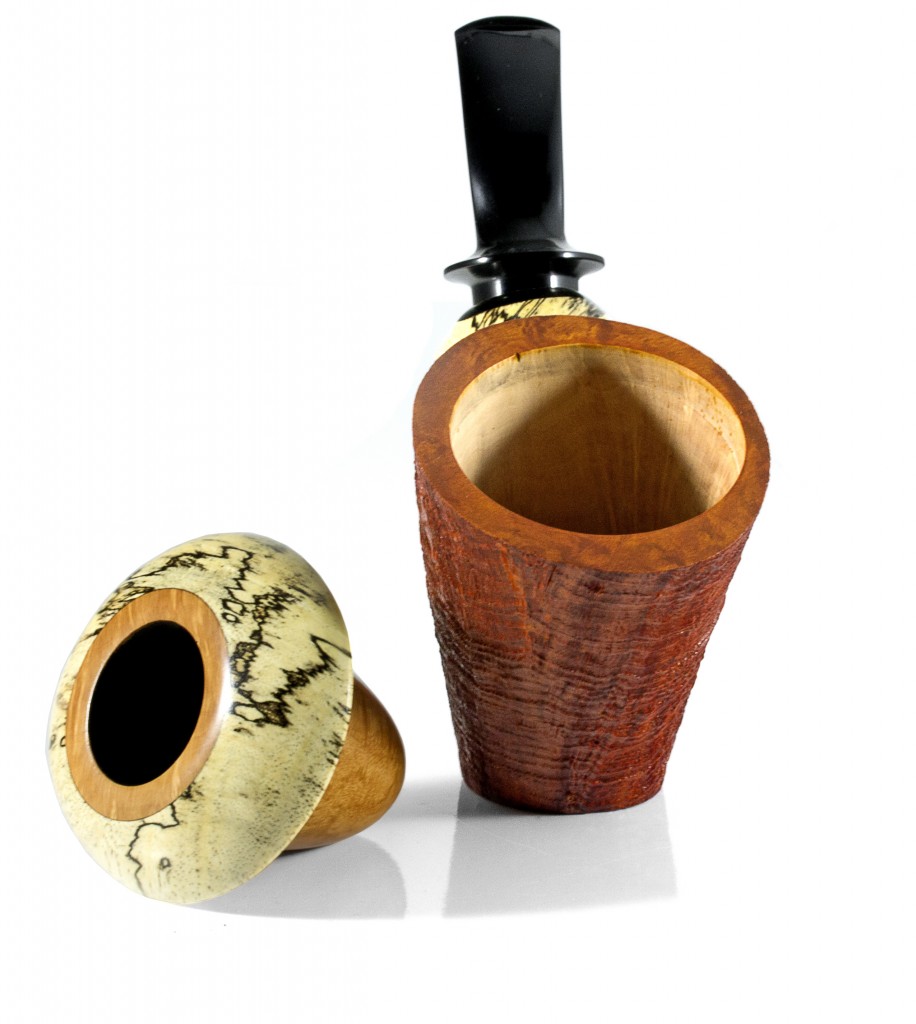 Another upside of this system is that is damned near impossible for any dottle to make it to the stem. If it somehow made it through the front system, it would surely be caught in the rear. That means one should never have to fear smoking a bowl down to the very bottom, even before the pipe is broken in.
Another upside of this system is that is damned near impossible for any dottle to make it to the stem. If it somehow made it through the front system, it would surely be caught in the rear. That means one should never have to fear smoking a bowl down to the very bottom, even before the pipe is broken in.